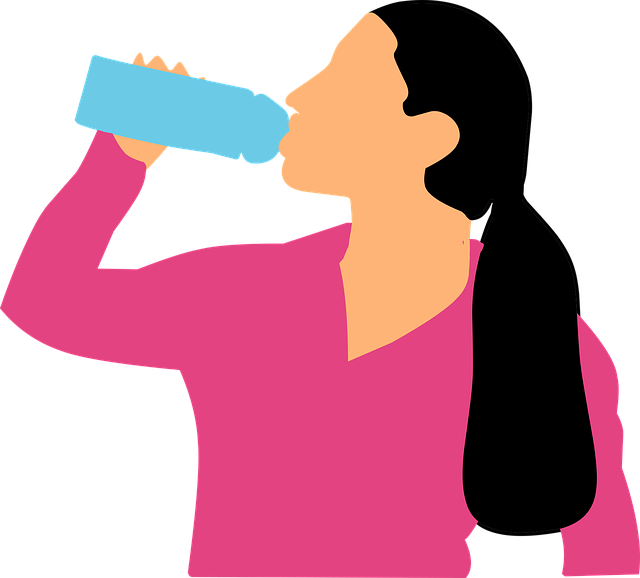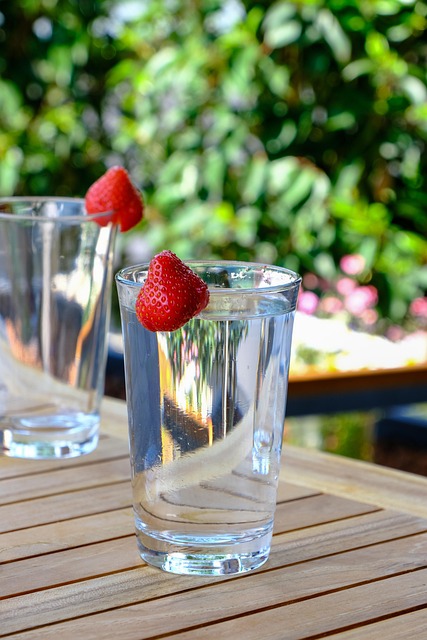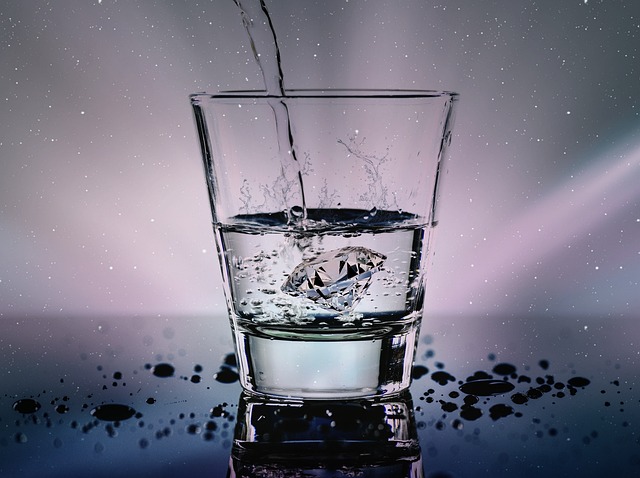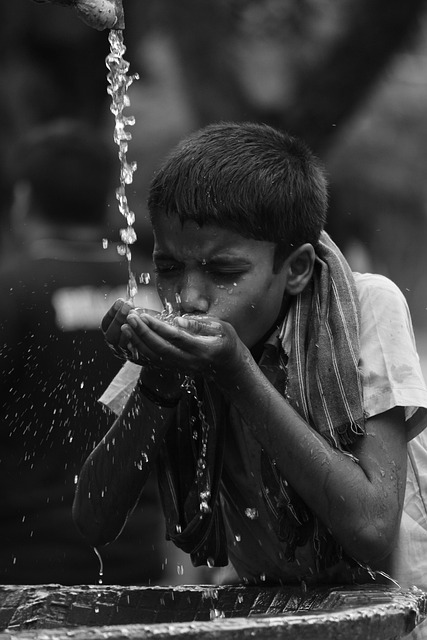
Introduction of Drinking water
We all know that drinking water is important, but many of us still don’t drink enough each day. Whether you’re working, studying, or just going about your daily routine, it’s easy to forget to take a sip. But the truth is, drinking water is one of the simplest ways to stay healthy. Our bodies need it to function properly—from keeping our skin fresh to helping us think clearly and stay energized. In this article, we’ll explore why drinking water is so essential for your overall health and well-being.
Benefits of Drinking Water

1.Drinking Water Enhances Physical Performance
When you’re active, your body loses fluids through sweat. Drinking enough water helps maintain energy, improves endurance, and keeps your muscles working efficiently.
2. Drinking Water Supports Brain Function and Emotional Balance
Even mild dehydration can affect your focus, memory, and mood. Regularly drinking water helps keep your brain sharp and your thoughts clear.
3.Drinking Water Improves Digestion and Prevents Constipation
Water plays a key role in breaking down food and moving it smoothly through the digestive system. Drinking water regularly can help prevent bloating and constipation.
4. Helps Flush Out Toxins
Your kidneys rely on water to remove waste from your body. Staying hydrated supports healthy kidney function and helps prevent urinary issues.
5. Aids in Weight Management
Drinking water before meals can reduce hunger and help you avoid overeating. Choosing water over sugary drinks also cuts unnecessary calories from your diet.
6. Promotes Healthy, Glowing Skin
When you’re well-hydrated, your skin looks fresher and more vibrant. Drinking water supports skin elasticity and helps reduce dryness and dullness.
Signs of Dehydration
It’s important to recognize when your body needs more water. Common signs of dehydration include:
- Dry mouth and lips
- Headache
- Dizziness or lightheadedness
- Dark yellow urine
- Fatigue
- Muscle cramps
- Dry skin
- Constipation
- Rapid heartbeat
How Much Water Should You Drink?

You’ve probably heard the advice to drink eight glasses of water a day, and while that’s a good general rule, the truth is—everyone’s needs are a little different.
How much water you should drink depends on a few things:
- Your age and body size – Larger bodies usually need more fluids.
- Your activity level – If you exercise or sweat a lot, you’ll need more water.
- The weather – Hot or humid climates can cause you to lose more water.
- Your health – Fever, vomiting, diarrhea, or certain health conditions can increase your need for fluids.
- Your diet – Eating salty, spicy, or high-protein foods may require you to drink more.
Make a Goal to Drink water
A commonly recommended amount is about:
- 2 to 2.5 liters (8–10 cups) of water per day for adults.
That’s roughly half a gallon, but it includes all fluids from drinks and food.
You don’t need to overthink it. A simple way to check your hydration is by looking at your urine color:
- Light yellow = you’re well hydrated
- Dark yellow or amber = time to drink more water
- Don’t wait until you’re thirsty—thirst is a late sign of dehydration.
- Drink a glass of water with every meal and snack.
- Increase your water intake when it’s hot outside or after physical activity.
Can You Drink Too Much Water?
Yes, you can drink too much water, although it’s not very common. However, when it does happen, it can lead to a condition called hyponatremia, where the body’s sodium levels become too low. As a result, the balance of fluids in your body is disrupted, which can cause symptoms like nausea, headache, confusion, and in extreme cases, seizures. Therefore, it’s important to drink enough water throughout the day, but not to overdo it all at once. In short, staying hydrated is healthy, but balance is key
Can You Survive Without Water ?
No, you cannot survive without water. Water is essential for life because it supports nearly every function in the human body. It helps regulate temperature, keeps your organs working properly, carries nutrients to your cells, and removes waste. Without water, your body begins to shut down. Most people can only survive three to five days without any water, depending on factors like age, health, and environment. In hot climates or during intense physical activity, that time could be even shorter due to faster dehydration. Simply put, without water, your body can’t function—and survival becomes impossible after just a few days.
Uses of Water Drinking Water

1. Essential for Human Survival
- Hydration: Maintains the body’s fluid balance.
- Temperature Regulation: Helps regulate body temperature through sweating and respiration.
- Organ Function: Vital for proper function of kidneys, heart, and brain.
2. Digestion and Metabolism
- Aids Digestion: Helps break down food in the stomach.
- Nutrient Absorption: Assists in the absorption of vitamins and minerals.
- Waste Removal: Flushes out toxins and waste through urine and sweat.
3. Health and Wellness
- Improves Skin Health: Keeps skin hydrated and may reduce acne.
- Supports Weight Management: Drinking water before meals can reduce appetite.
- Prevents Dehydration: Avoids symptoms like headaches, fatigue, and dizziness.
4. Personal Hygiene
- Mouth Rinsing: Keeps the mouth clean and reduces bacteria.
- Brushing Teeth: Used with toothpaste to clean teeth and maintain oral hygiene.
5. Medical and Emergency Use
- Taking Medicines: Helps swallow and digest medication.
- Hydration in Illness: Critical during fever, vomiting, or diarrhea.
6. Food Preparation
- Cooking: Used in boiling, steaming, and other cooking methods.
- Washing Food: Rinses fruits, vegetables, and other raw ingredients.
7. Religious and Cultural Use
- Rituals: Used in religious ceremonies and purifications.
- Offerings: Part of traditional offerings in many cultures.
8. Environmental and Household Use (with clean drinking water if no other source is available)
- Watering Plants (in small amounts): Occasionally used when other water is not accessible.
- Pet Hydration: Safe and clean water for domestic animals.
How one can save Drinking Water ?
1. Fix Leaks
- Repair Taps and Pipes: Even small drips waste a lot of water over time.
- Check Toilets for Leaks: Use food coloring in the tank to detect leaks.
2. Use Water Wisely
- Turn Off Taps When Not in Use: While brushing teeth or washing hands.
- Use a Mug Instead of Running Water: For shaving or brushing.
3. Install Water-Saving Devices
- Low-Flow Faucets and Showerheads: Reduce water flow without affecting use.
- Dual Flush Toilets: Use less water for liquid waste.
4. Reuse and Recycle Water
- Reuse RO Waste Water: For cleaning floors or washing vehicles.
- Collect Rainwater: Use it for gardening or washing purposes.
5. Efficient Water Use in Household Chores
- Run Full Loads in Washing Machines and Dishwashers: Saves multiple liters each time.
- Use a Bucket Instead of a Hose: For washing cars or watering plants.
6. Raise Awareness
- Educate Family and Community: Teach the importance of saving drinking water.
- Involve Children: Encourage good habits from a young age.
7. Protect Water Sources
- Avoid Polluting Water Bodies: Don’t throw waste or chemicals into rivers or lakes.
- Plant Trees and Maintain Greenery: Helps recharge groundwater.
Basic Facts of Drinking Water
- About 60-70% of the human body is made up of water.
- An average adult should drink 2 to 3 liters (8–12 glasses) of water per day.
- Clean drinking water is free from harmful bacteria, viruses, chemicals, and pollutants.
- Boosts Brain Function: Even mild dehydration can affect focus and memory.
- Improves Digestion: Helps prevent constipation and supports the digestive process.
- Flushes Toxins: Keeps kidneys healthy by removing waste through urine.
- Promotes Healthy Skin: Prevents dryness and improves complexion.
Sources of Drinking Water
- Natural Sources: Rivers, lakes, underground wells, and springs.
- Processed Sources:Tap water (municipal supply)
- Bottled water
- Filtered or purified water (via RO, UV, or carbon filters)
Health Benefits
- Boosts Brain Function: Even mild dehydration can affect focus and memory.
- Improves Digestion: Helps prevent constipation and supports the digestive process.
- Flushes Toxins: Keeps kidneys healthy by removing waste through urine.
- Promotes Healthy Skin: Prevents dryness and improves complexion.
Common Methods to Purify Drinking Water
- Boiling: Kills germs and bacteria.
- Filtration: Removes particles and impurities.
- Chlorination: Common in municipal water supplies.
- Reverse Osmosis (RO): Removes dissolved salts and contaminants.
- UV Treatment: Kills harmful microorganisms using ultraviolet light.
Global Issues Related to Drinking Water
- Water Scarcity: Many regions suffer from lack of access to clean water.
- Water Pollution: Industrial waste, sewage, and plastic waste contaminate water bodies.
- Inequality: Not everyone has access to safe and affordable drinking water.
Tips for Safe Drinking Water
- Store in clean, covered containers.
- Avoid plastic bottles in heat or direct sunlight.
- Check expiry date on bottled water.
- Always use a reliable purification method if unsure of water quality.
Effects of Contaminated Water on Health
Contaminated water can have serious effects on human health. It may contain harmful bacteria, viruses, chemicals, or parasites that can cause diseases such as cholera, diarrhea, typhoid, and hepatitis A. Drinking unsafe water can lead to stomach pain, vomiting, dehydration, and even long-term health issues like kidney damage or cancer. Children, pregnant women, and the elderly are especially at risk. Ensuring access to clean, safe drinking water is essential for preventing illness and promoting overall well-being.
Drinking Water in Rural vs. Urban Areas
Access to drinking water differs between rural and urban areas. In urban areas, people usually get treated and piped water from municipal systems, which is often cleaner and more reliable. In contrast, rural areas often depend on wells, rivers, or hand pumps, which may be untreated and more prone to contamination. Rural communities may also face challenges like poor infrastructure, water shortages, and lack of awareness about purification methods. Improving water access in rural areas is essential to ensure safe and healthy living for all.
Government Efforts and Policies on Drinking Water
Governments play a crucial role in ensuring access to safe drinking water through various efforts and policies. They invest in building water supply systems, treatment plants, and pipelines to provide clean water to both urban and rural areas. Policies such as the Jal Jeevan Mission in India aim to provide tap water to every rural household. Governments also set water quality standards, monitor sources, and run awareness campaigns about water conservation and hygiene. In emergencies like droughts or floods, special measures are taken to supply clean drinking water. These initiatives help improve public health, reduce water-borne diseases, and promote sustainable water management.
How to Store Drinking Water Safely

Storing drinking water safely is essential to prevent contamination and ensure it remains clean and safe for consumption. Water should be stored in clean, food-grade containers with tight-fitting lids to keep out dust, insects, and bacteria. It’s best to use containers made of glass, stainless steel, or BPA-free plastic. Stored water should be kept in a cool, dark place away from direct sunlight and harmful chemicals. Before storing, always ensure the water is properly filtered or boiled. It’s also important to clean storage containers regularly and label them with the date of storage to keep track of freshness. Safe storage practices help maintain water quality and protect health, especially in areas with unreliable water supply.
Methods to Purify Drinking Water
There are several effective methods to purify drinking water and make it safe for consumption. Boiling is a simple and common method that kills most bacteria, viruses, and parasites. Filtration systems use physical barriers to remove impurities and suspended particles. Chlorination involves adding chlorine to kill germs, often used in public water supplies. UV purification uses ultraviolet light to destroy microorganisms without altering the taste. Reverse Osmosis (RO) systems remove dissolved salts, chemicals, and heavy metals. Each method has its own advantages and is chosen based on water quality and available resources.
conclusion
Drinking water is essential for life, health, and well-being. It supports every function in the human body, from digestion to temperature regulation. Access to clean and safe drinking water helps prevent diseases, promotes hygiene, and improves the quality of life. However, with growing pollution and water scarcity, it is important to use water wisely, store it safely, and ensure it is properly purified before use. Governments, communities, and individuals must work together to protect this vital resource for present and future generations. Clean drinking water is not just a need—it is a right and a responsibility.
